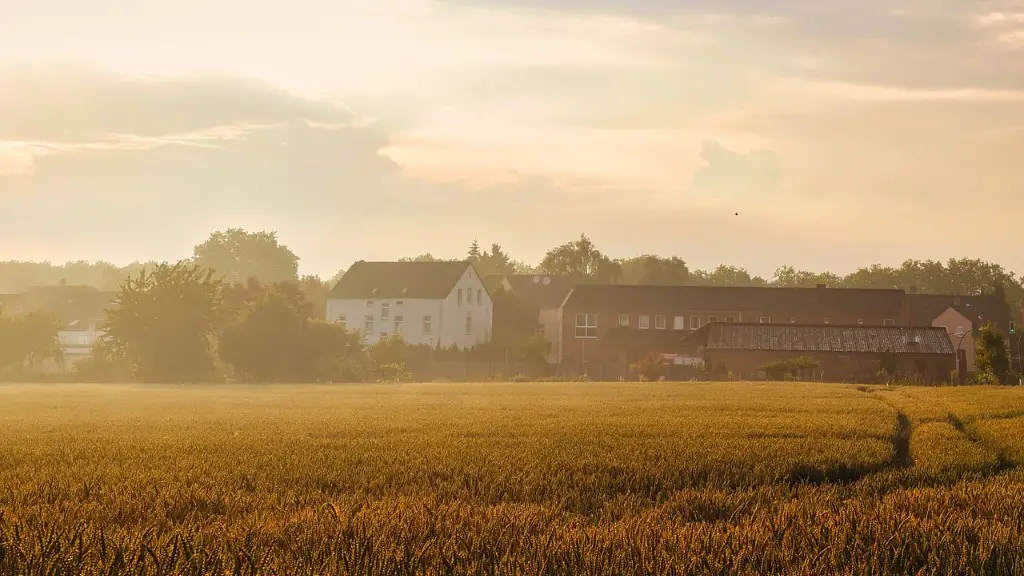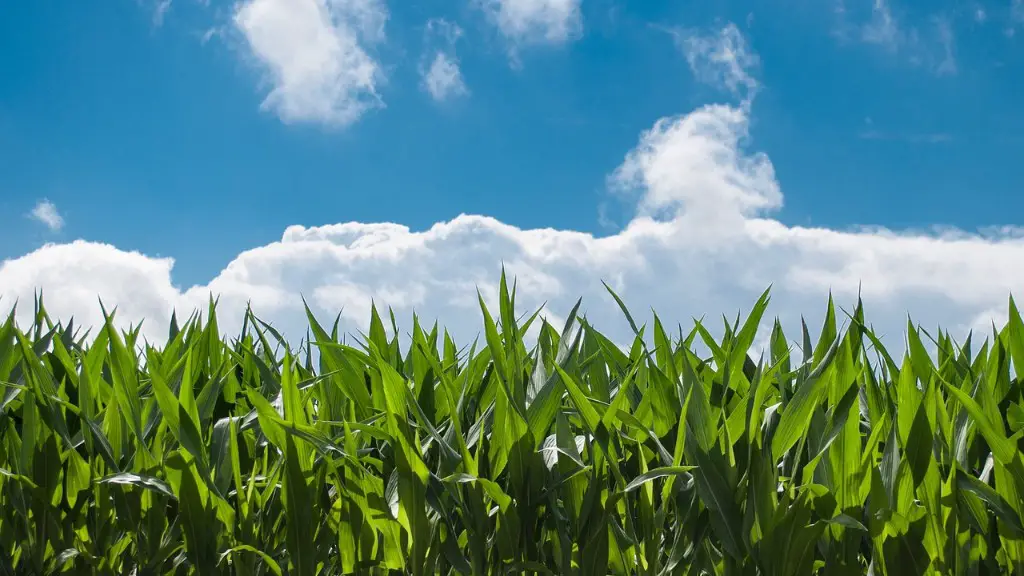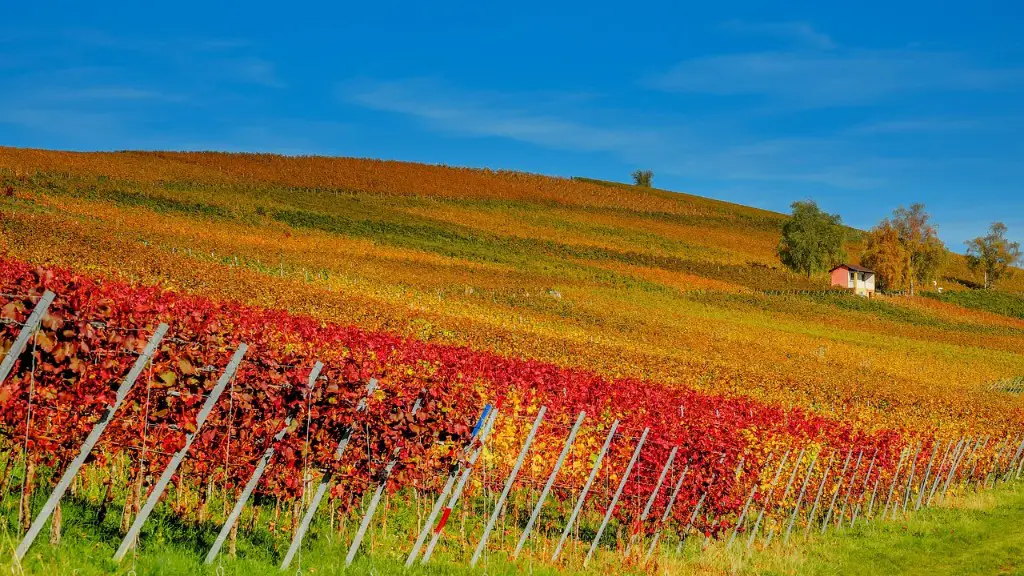Humans living in agricultural regions rely heavily upon wind for some essential tasks. Climate change and global warming have dramatically changed wind patterns in recent years, making it harder for farmers to predict when the wind will be beneficial to their operations. This has had a significant impact on agricultural production, which will only worsen in the coming years. Wind affects agriculture in two main ways: through its power to move or spread seeds and pollens and through the direct effect it has on plants, animals, and soil.
Wind has the power to spread seeds, pollen, and other contaminants. This can be a great blessing or a major hindrance to agriculture, depending on what kind of materials are being spread. On one hand, wind can help move beneficial seeds and pollens that support a healthy crop growth. On the other, wind can also spread contaminants such as pests, weeds, diseases, and chemicals that can harm harvests. To combat this, farmers often use protective nets and fences to help contain the spread of potentially harmful materials.
Wind also affects crops in more direct ways. Strong winds can cause windburn or abrasion on young, delicate crops, stunting or even killing them. fierce winds can also cause ungrounded soil to be blown away, decreasing fertility and creating air pockets that are less able to hold and circulate moisture. Wind may also be damaging to livestock and other animals, reducing the amount of time they spend grazing and potentially creating dust storms that can irritate their respiratory systems.
Wind can affect water resources, as well. In some areas, wind is a major factor in the seasonal distribution of rain, which is essential for the health of crops. Too much wind can cause soil erosion, leading to increased runoff and decreased water. Wind can also damage irrigation systems and soil cover, making it harder for rain water to be retained and further exacerbating soil erosion.
Wind can also be beneficial to agriculture in certain situations. Wind is used to cool livestock and poultry, reduce the need for manual work by powering equipment such as threshers, and in windmills to draw water for livestock and crop irrigation. Wind is also used to dry and reduce moisture in crop fields and can be useful for pest and disease control.
How Wind Affects Pollination
Pollination is an important part of crop production and it’s mainly done by the wind. When plants release pollen into the air, it’s picked up by the wind, which then carries it to other plants, where it can fertilize them. Of course, this means that wind speed and direction can play a huge role in the success of a crop. The wind’s ability to move small particles of pollen across long distances is critical in ensuring crop production. This means that if wind speed and direction are not conducive to pollination, a farmer could expect to see reduced crop yields.
The Impact of Wind on the Spread of Pests and Diseases
Pests and diseases can also be spread through the wind. Parasitic insects like aphids and mites, as well as fungal diseases, are both highly influenced by wind currents. When an infected or infested area is upwind of a crop field, the wind can easily carry these pests and diseases over to the non-infected plants. This makes it difficult for farmers to control the spread of these pests and diseases and can have a major impact on their crop yield.
The Role of Wind in Soil Erosion
Wind is also a major factor in soil erosion. Wind can carry away small bits of soil, reducing the overall soil fertility of the area. This can be particularly damaging to cropland, where the topsoil is particularly important for water retention, preventing runoff and promoting healthy crop growth. Wind erosion can also reduce levels of beneficial nutrients in the soil, leading to poor crop yields. It can also reduce the overall amount of water available to farmers, as it carries away moisture particles from the soil.
The Benefits of Wind
Wind can also be beneficial for agriculture. Windmills can be used to pump water for crop irrigation, or to provide cooling for livestock. Wind can also be used to help with pest and disease control, by reducing the moisture content in crop fields and helping to spread natural predators. Wind power can also be used to power agricultural equipment, reducing the amount of manual labor required on a farm.
The Impact of Changing Wind Patterns
In recent years, climate change has caused shifting wind patterns, making it harder for farmers to predict when the winds will be favorable towards their crops and livestock. This unpredictability can make it more difficult to plan and execute farming practices. In some cases, farmers may have difficulty deciding when to sow their seeds, or when to harvest their crops, due to variable wind patterns. This unpredictability can also increase the chance of crop failure, as farmers may not be able to take full advantage of favorable weather conditions when they arise.
The Role of Windbreaks in Agriculture
In order to counteract the effects of wind on farms, farmers often use windbreaks. These protect crops from the wind, preventing it from damaging delicate leaves, reducing topsoil erosion, keeping crops further from potentially contaminated air, and helping to limit the spread of pests and diseases. Windbreaks can also be used to reduce the overall amount of wind at the farm, making it easier to predict wind patterns and plan agricultural activities accordingly.
Managing for Wind-Related Risks
Despite the usefulness of windbreaks, there are also risks that come with managing wind-related issues in agriculture. If a windbreak is too close to a crop, it can still cause damage, by blocking too much of the sun’s rays. They also require a significant amount of maintenance, and must be carefully managed in order to be effective. In some areas, wind gusts may be so strong that their impacts cannot be mitigated by windbreaks.
Integrating Wind Technology into Agriculture
Emerging technologies offer a new way for farmers to manage the impacts of wind. Technologies such as drones, smart sensors, and automated irrigation systems can help to monitor and regulate wind-related issues, reducing the need for manual labor and decreasing the chance of crop failure in changing wind patterns.
Conclusion
Wind is an important factor in agricultural production, and climate change has caused wind patterns to become more erratic. Wind has the power to spread beneficial materials, such as seeds and pollens, but can also carry damaging contaminants, such as pests, weeds, and chemicals. Wind can also directly affect crops and land, causing windburn and abrasion, as well as modifying water resources. Fortunately, farmers can use windbreaks to reduce the impact of wind on their farms. Additionally, emerging technologies, such as drones and smart sensors, can be used to monitor and regulate wind-related issues.



